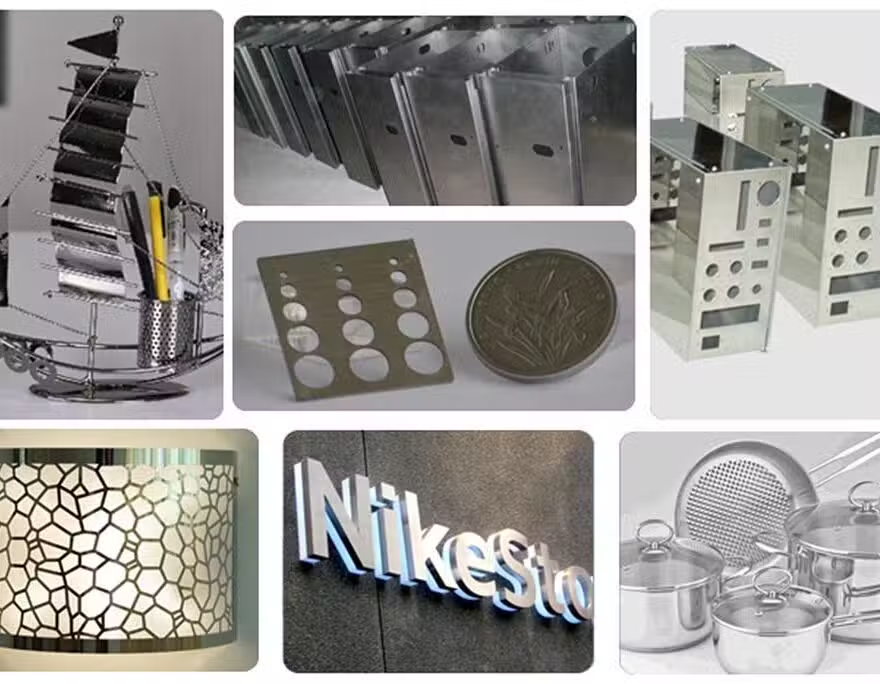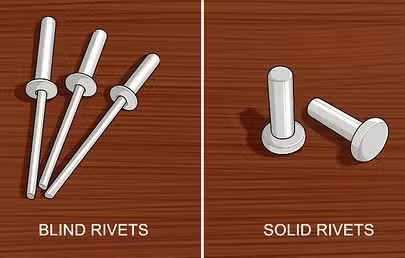Laser cutting, a non-contact fabrication technology, has become quite popular. It uses a high-energy laser beam to melt, vaporize, or burn away material, allowing it to be separated. This one cutting technique can achieve many different results in manufacturing projects across various industries.
In this ultimate guide, we go through every aspect of laser cutting to show you the true potential of this exceptional cutting technique. Considering the method as your primary manufacturing process, this guide will clarify everything you need. Let’s get started.
The Ultimate Guide to Laser Cutting
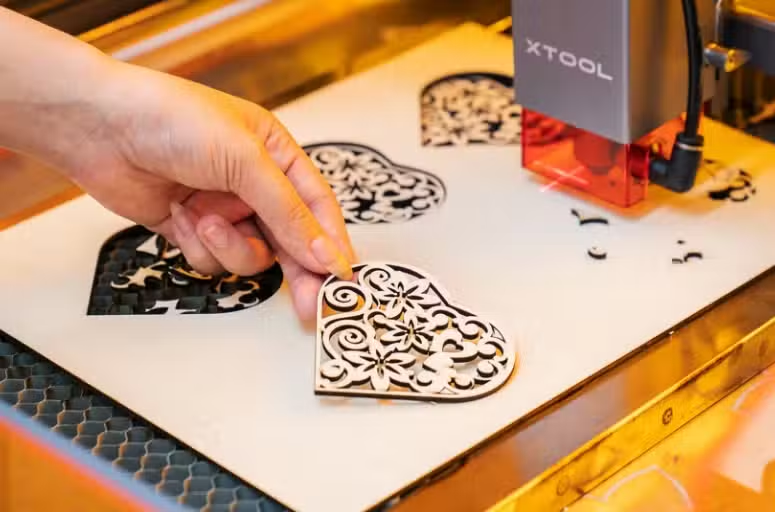
Before we even learn about laser cutting in depth, it’s essential to understand why the technology is crucial for manufacturing success. Here are some key benefits that laser cutting provides –
Laser cutting has revolutionized manufacturing and design, offering many benefits across various industries. Here’s a breakdown of the key advantages:
- High Precision and Accuracy
Laser cutting delivers exceptional accuracy, enabling intricate designs and tight tolerances. This precision minimizes material waste and ensures consistent results, which is crucial for applications requiring high levels of detail.
- Versatility
One of the most significant benefits is the ability to cut a wide range of materials, including metals, plastics, wood, and textiles. This versatility makes laser cutting suitable for diverse applications across numerous industries.
- Speed and Efficiency
Laser cutting is a relatively fast process, especially for complex designs. This speed enhances productivity and reduces lead times, making it ideal for prototyping and mass production.
- Clean Cuts and Minimal Post-Processing
Laser cutting produces clean, smooth edges, often eliminating the need for secondary finishing processes. This reduces labor costs and improves the overall quality of the finished product.
- Automation and CNC Control
Laser cutting machines are typically computer-controlled (CNC), allowing for automated production. This automation ensures consistency and repeatability, enabling the production of complex shapes with ease.
- Non-Contact Cutting
Because the laser beam doesn’t physically contact the material, the equipment experiences minimal wear and tear. This also prevents material contamination and reduces the risk of damage to delicate materials.
Introduction to Laser Cutting
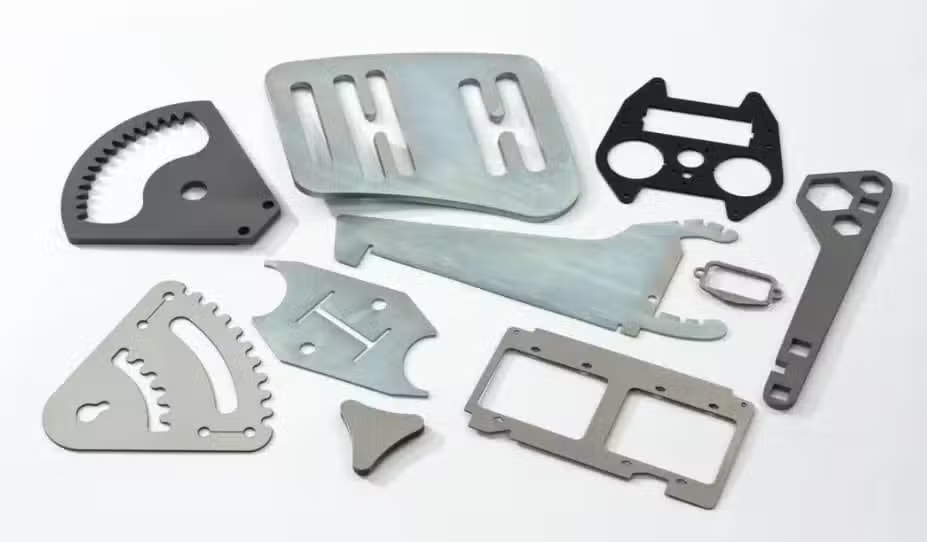
Now, let’s go ahead and get an in-depth introduction to laser cutting. From what it is to its ideal use in different scenarios, you will learn everything here.
What is Laser Cutting?
Laser cutting is an advanced manufacturing process that uses a high-powered laser beam to cut, engrave, or mark materials with exceptional precision and minimal physical contact. Unlike traditional cutting methods that rely on mechanical tools, laser cutting uses focused light energy to slice through or modify materials with remarkable accuracy.
How Does Laser Cutting Work?
At its core, laser cutting is a thermal process that utilizes a highly focused laser beam to cut or engrave materials precisely. While seemingly simple, the process involves a sophisticated interplay of physics, optics, and material science. Here’s a more detailed exploration of the key steps –
Laser cutting is a precise and versatile manufacturing process that uses a highly focused laser beam to cut materials. Here’s a breakdown of how it works:
1. Laser Beam Generation:
The process begins with the generation of a laser beam. This is done within a laser resonator, where a light source is amplified. Different lasers exist, such as CO2 lasers (often used for non-metals) and fiber lasers (commonly used for metals), each with specific wavelengths and power outputs.
2. Beam Focusing:
The generated laser beam is then directed through an optical system, which typically includes mirrors and lenses. This system focuses the beam into a very small, intense spot. This concentration of energy is crucial for cutting materials.
3. Material Interaction:
The focused laser beam is directed onto the material’s surface. The intense heat from the laser causes the material to melt, turn into gas, or burn. The specific reaction depends on the cut material and the laser’s power.
4. Cutting and Assist Gas:
As the material is heated and removed, the laser beam moves along a predetermined path, cutting the material. In many laser cutting applications, an assist gas is used. This gas:
- Helps to remove molten material from the cut zone.
- Cools the material to minimize heat-affected zones.
- It can also react with the material to enhance the cutting process.
The laser cutting design is controlled by a CNC (Computer Numerical Control) system, which follows instructions from a CAD (Computer Aided Design) file. The
Types of Laser Cutting
There are different types of laser cutting methods. The most common are CO2 laser cutting, fiber laser cutting, and ND: YAG laser cutting.
CO2 Laser Cutting
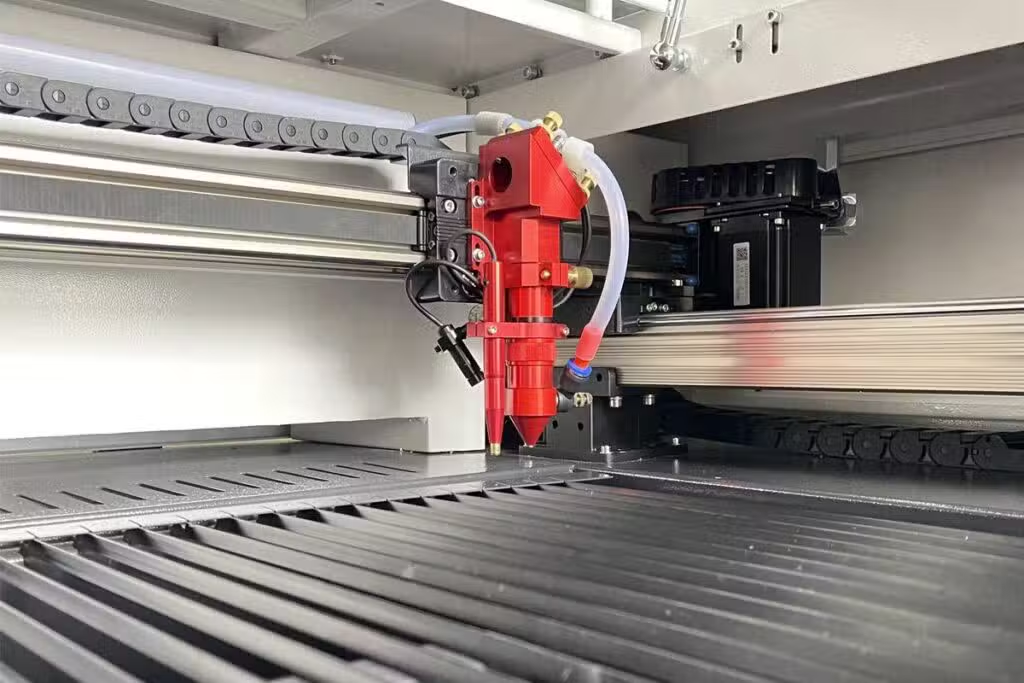
CO2 laser cutting is a gas-based laser technology that generates a laser beam by electrically stimulating a mixture of carbon dioxide, nitrogen, helium, and hydrogen gases within a sealed tube. This type of laser produces infrared light with a wavelength of 10.6 micrometers, making it particularly effective for non-metallic materials.
Unique Features:
- Uses a gas-mixture laser generation method
- Produces a relatively long-wavelength laser beam
- Operates at lower power densities compared to solid-state lasers
- Requires regular maintenance of gas mixture and optical components
Advantages:
- Extremely versatile across a wide range of non-metallic materials
- Lower initial equipment cost compared to other laser cutting technologies
- Excellent beam quality and precision for thin to medium-thickness materials
- Capable of producing smooth, high-quality cuts with minimal material deformation
- Relatively low operating temperatures reduce thermal stress on materials
Disadvantages:
- Limited effectiveness on reflective and highly conductive metals
- Less efficient for cutting thick metallic materials
Ideal Uses:
- Woodworking and furniture design
- Acrylic and plastic fabrication
- Textile and leather cutting
- Signage and display manufacturing
- Architectural model making
- Paper and cardboard processing
- Packaging design and prototyping
Fiber Laser Cutting
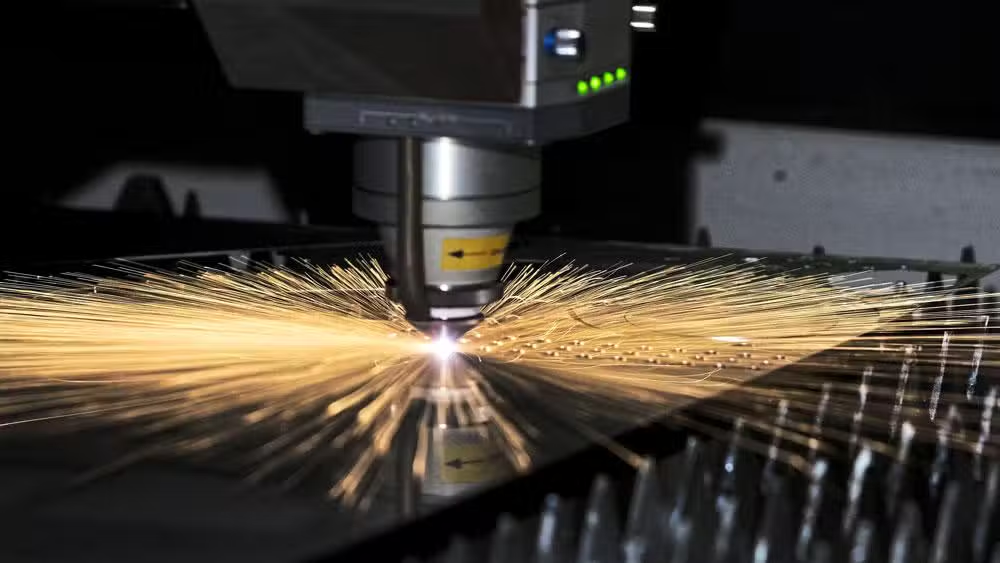
Fiber laser cutting represents a quantum leap in laser technology. It utilizes optical fibers doped with rare-earth elements like erbium, ytterbium, or neodymium to generate the laser beam. These solid-state lasers create a highly concentrated and powerful beam that can efficiently process metallic materials with exceptional precision. It’s the ultimate laser metal cutting process.
Unique Features:
- Generates a laser beam through a doped optical fiber
- Produces a significantly shorter wavelength (around 1.06 micrometers)
- Offers superior beam quality and energy efficiency
- Minimal maintenance requirements compared to gas-based systems
Advantages:
- Exceptional performance on metallic materials, especially thin sheets
- Significantly higher energy efficiency compared to CO2 lasers
- Longer operational lifespan with reduced maintenance needs
- Superior beam quality allows for extremely precise cuts
- Capable of high-speed processing, especially for thin materials
Disadvantages:
- Higher initial equipment investment
- Less effective on non-metallic materials compared to CO2 lasers
Ideal Uses:
- Metal fabrication and sheet metal processing
- Automotive parts manufacturing
- Electronics enclosure production
- Aerospace component fabrication
- Precision medical device manufacturing
- Industrial machinery parts
- Electrical component cutting
Nd: YAG Laser Cutting
Nd: YAG (Neodymium-doped Yttrium Aluminum Garnet) laser cutting is a solid-state laser technology that uses a crystal medium doped with neodymium ions. This technology generates a laser beam with a wavelength of 1.064 micrometers, making it particularly suitable for processing metals and ceramics with high melting points.
Unique Features:
- Utilizes a crystal-based laser generation method
- Produces a near-infrared wavelength
- Capable of high-power output
- Excellent for processing materials with high thermal conductivity
Advantages:
- Superior performance on thick metallic and ceramic materials
- Ability to process highly reflective metals
- Excellent deep penetration capabilities
- Robust and reliable in industrial environments
- Versatile across various material thicknesses
Disadvantages:
- Higher operational costs compared to other laser technologies
- More complex thermal management requirements
Ideal Uses:
- Thick metal cutting and processing
- Automotive and heavy machinery manufacturing
- Aerospace component fabrication
- Advanced ceramic processing
- High-temperature material cutting
- Industrial tooling and die-making
- Advanced research and scientific applications
Laser Cutting Materials: Can and Can’t
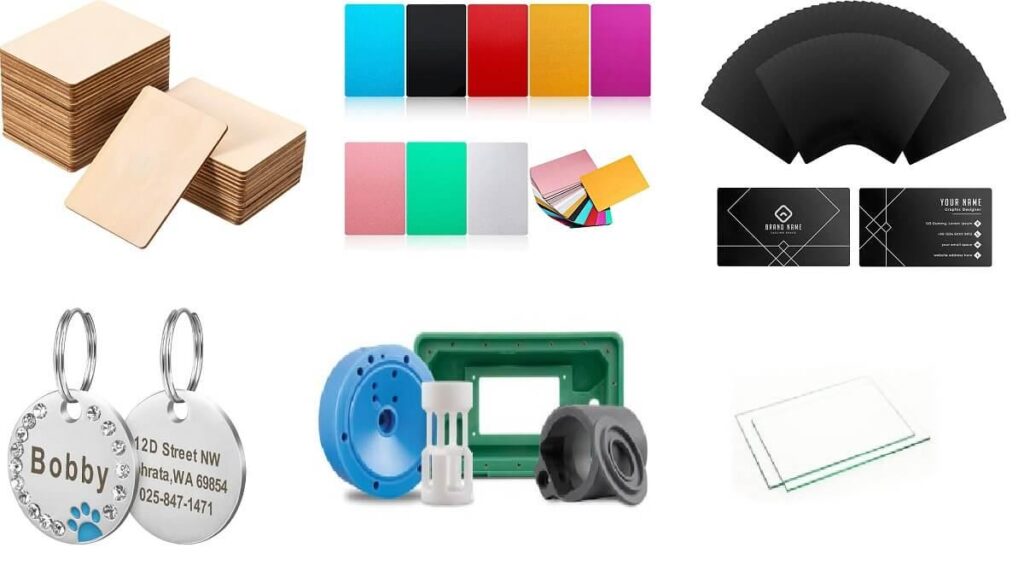
Laser cutting is a highly efficient and precise manufacturing technique widely used in industrial production and artistic design. Its applicability mainly depends on the type of laser (such as CO₂, fiber, Nd: YAG, etc.) and the characteristics of the material. Below is a summary of the common materials that can be cut and the relevant precautions:.
Materials Excellent for Laser Cutting
The materials you can cut with a laser cutter can be categorized into three categories. Metal materials, non-metal materials, and specialty materials. Here’s a breakdown of each category –
Metal Materials
A diverse array of metals exhibits excellent compatibility with laser cutting technology. This category includes materials such as –
- Stainless Steel: Corrosion-resistant and widely used across industries, it cuts well with appropriate laser power and assist gas (typically nitrogen for clean cuts).
Precautions: Use sufficient laser power; consider nitrogen assist gas for clean, oxide-free edges.
- Carbon Steel: Strong and cost-effective for structural applications, it cuts efficiently with oxygen assist gas to aid the exothermic reaction.
Precautions: Use oxygen assist gas to enhance cutting; manage potential heat-affected zones.
- Aluminum: Lightweight and used in aerospace and automotive, it requires fiber lasers or anti-reflective coatings due to its reflectivity.
Precautions: Use fiber laser or apply anti-reflective coating; nitrogen assist gas is often preferred for clean cuts.
- Titanium: High strength-to-weight ratio for demanding applications, it can be laser cut with careful parameter selection and inert assist gas.
Precautions: Use inert assist gas (e.g., argon) to prevent oxidation; control heat input to avoid property changes.
- Brass: Chosen for its aesthetic appeal and machinability, it can be cut with moderate laser power, though it’s more reflective than steel.
Precautions: Higher reflectivity requires increased laser power; monitor for potential fume generation.
- Copper: Highly reflective, requiring high-powered fiber lasers with good beam absorption for effective cutting.
Precautions: Requires high-power fiber laser; consider anti-reflective coating for better absorption.
Non-Metal Materials
The realm of non-metallic materials also presents a wide range of laser cutting possibilities.
Plastic
Some plastics (such as polycarbonate) are easy to melt or change color, and parameters must be tested.
- Acrylic (PMMA): Known for optical clarity, cuts cleanly with CO₂ lasers often producing a polished edge.
Precautions: Ensure good ventilation to remove fumes; avoid excessive heat to prevent melting or warping.
- ABS: Commonly used in prototyping, it can be laser cut with CO₂ lasers but may produce more fumes than acrylic.
Precautions: Adequate ventilation is crucial; optimize power and speed to minimize charring and melting.
- PET: Frequently used in packaging and fibers, it can be cut with CO₂ lasers, but may require specific settings for clean edges.
Precautions: Test parameters to avoid melting or rough edges; ensure proper fume extraction.
- Polypropylene (PP): Valued for chemical resistance, it can be laser cut with CO₂ lasers, but tends to melt easily.
Precautions: Requires careful parameter control (low power, high speed) to minimize melting and warping.
Wood
- Plywood: Responds well to laser energy, allowing intricate cuts and engraving, but edges can char.
Precautions: Expect some edge charring; adjust power and speed for desired engraving depth and cut quality.
- MDF (Medium-Density Fiberboard): Cuts cleanly but produces more smoke and residue than solid wood.
Precautions: Requires good ventilation to handle the significant smoke; clean optics frequently due to residue.
- Cork: Easily laser cut and engraved, producing a dark mark, but can be flammable if power is too high.
Precautions: Use lower power settings; monitor closely for potential ignition.
- Bamboo: Cuts and engraves well, often with a noticeable color contrast, but can also char.
Precautions: Similar to wood, expect some charring; adjust settings for desired effect.
Fabric
- Cotton: Commonly processed for intricate designs in textiles, but can burn easily.
Precautions: Use lower power and multiple passes; ensure material is taut to prevent movement.
- Polyester: Melts rather than burns cleanly, often resulting in sealed edges, suitable for some textile applications.
Precautions: Expect some melting and potential fumes; adjust settings to control edge finish.
- Leather: Cuts cleanly and engraves well, commonly used in fashion and crafts, but can produce a strong odor.
Precautions: Ensure good ventilation to remove the strong smell; avoid excessive heat which can damage the leather.
Other
- Rubber: Can be laser cut and engraved, but some types produce hazardous fumes.
Precautions: Ensure good ventilation; know the specific type of rubber being used and its safety data.
- Ceramic-coated Materials: The coating can often be removed or engraved with a laser, but the base material’s properties will also be a factor.
Precautions: Consider the properties of both the coating and the base material; ensure fumes are safely managed.
- Certain Composite Materials: Compatibility varies greatly depending on the specific composition of the composite.
Precautions: Know the exact materials in the composite; some may release hazardous fumes or delaminate.
Specialty Materials
A niche category of materials requires specialized laser technology for processing. These include –
- Stone: Challenging for standard lasers, micro-engraving or cutting possible with ultrashort-pulse lasers (femtosecond/picosecond).
Precautions: Requires specialized ultrashort-pulse laser; manage potential dust generation.
- Glass: Difficult for typical industrial lasers, ultrashort-pulse lasers can achieve micro-engraving or cutting with minimal fracturing.
Precautions: Needs specialized ultrashort-pulse laser; control parameters carefully to prevent cracking.
- Carbon Fiber: Can be laser cut, increasingly used in high-performance applications, but requires precise parameter control.
Precautions: Careful parameter control is crucial to prevent delamination of layers and release of carbon dust.
- Glass Fiber: Can be processed, but generates hazardous airborne particles (glass dust) requiring strict safety measures.
Precautions: Requires robust dust extraction and personal protective equipment to prevent respiratory hazards.
Materials Not Suitable for Laser Cutting
Now, let’s talk about the materials that are not suitable for laser cutting at all. These are some of the most high-risk materials to use laser cutters on –
High-Risk Materials
This category comprises materials that pose significant risks to both the operator and the laser cutting equipment.
- Chlorine-Containing Materials: Chlorine-containing materials, such as PVC and polyvinyl chloride, release highly corrosive chlorine gas and hydrochloric acid upon laser exposure. This poses a severe risk of damage to the laser system’s optics and mechanical components and directly threatens respiratory health.
- Fluorine-Containing Materials: The materials, like Teflon/PTFE, emit toxic fluorides at elevated temperatures induced by laser cutting. This can lead to severe respiratory and systemic health issues for the operator.
- Materials Containing Lead: Laser processing of these materials generates toxic lead vapors. Exposure to these vapors can cause severe neurological and other systemic health problems, and the lead can also contaminate the laser equipment.
- Flammable materials: Some foams and thin plastic films may burn and require inert gas protection.
High-Risk Materials
Some materials are highly reflective, so they don’t gel well together when they encounter a laser cutter. These include –
- Mirror Metal: Possesses high reflectivity, which can cause the laser beam to be reflected back into the laser system, potentially damaging sensitive optical components.
- Transparent Materials (Ordinary Glass, Transparent Acrylic): Ordinary glass is generally difficult for standard industrial lasers. While CO₂ lasers can cut thick transparent acrylic, processing any transparent material requires careful adjustment of the laser focus to ensure proper energy absorption within the material.
Other Restrictions
There are two other restrictions that you should maintain when using laser cutting for your manufacturing needs.
- Ceramic/Hard and Brittle Materials: Conventional lasers often induce thermal shock, leading to cracking. Processing typically necessitates the use of ultrafast pulse lasers to minimize heat-affected zones.
- Certain Composite Materials (e.g., Metal-Plastic Laminates): The differing thermal properties of the constituent materials can lead to delamination, where the layers separate due to uneven expansion and contraction during laser processing.
Applications of Laser Cutting
It’s time to dive into practicality and see the real-life application of laser cutting across various industries.
Laser cutting’s precision and versatility have led to widespread adoption across numerous industries. Here’s an overview of its key applications:
Manufacturing and Industrial Applications
You will see laser cutting in many manufacturing and industrial components. The common applications are –
- Sheet Metal Fabrication: Laser cutting is crucial for producing precise metal components for various industries, including automotive, aerospace, and construction. It creates parts like body panels, brackets, and structural components.
- Automotive Industry: Manufacturing precise components like body panels, chassis parts, and exhaust systems.
- Aerospace Industry: Producing high-precision parts for aircraft, such as turbine blades, wing structures, and engine casings.
- Electronics: Manufacturing printed circuit boards (PCBs) and creating intricate components for electronic devices.
Art and Design:
Laser cutting leaves its mark on the art and design industry as well. For example –
- Architectural Models: Creating detailed scale models for architectural presentations.
- Decorative Arts: Producing intricate patterns and designs for wall art, sculptures, and decorative objects.
- Jewelry Making: Creating highly detailed and complex jewelry pieces from various materials.
Fashion and Textiles
Even in the fashion and textile industry, laser cutting is used here and there.
- Garment Manufacturing: Cutting fabrics with precision for clothing and accessories.
- Textile Design: Creating intricate patterns and designs on fabrics.
Medical Industry
The medical industry requires precision in every component, and that’s where laser cutting excels the most.
- Medical Device Manufacturing: Producing precise components for medical devices and implants.
- Surgical Instruments: Creating very precise surgical tools.
Prototyping and Rapid Manufacturing
These days, prototyping and rapid manufacturing are the most important manufacturing aspects. Laser cutting, with its speedy cutting technique, provides exceptional prototyping capabilities.
- Product Development: Creating prototypes for product testing and development.
- Rapid Prototyping: Quickly producing prototype parts.
Conclusion
In summary, learning the laser cutting technique is totally worth all the effort. It offers plenty of benefits, including an extreme level of precision, speedy machining, and material versatility. Learning this technology can benefit people in various sectors, such as manufacturing, art, aerospace, automotive, medicine, and so on.
You can use our guide to get started with laser cutting, as it provides detailed information on how to do it and choosing from the different types. But if you simply want the service, you can contact Zintilon for their exceptional laser cutting services.
Great, Together
